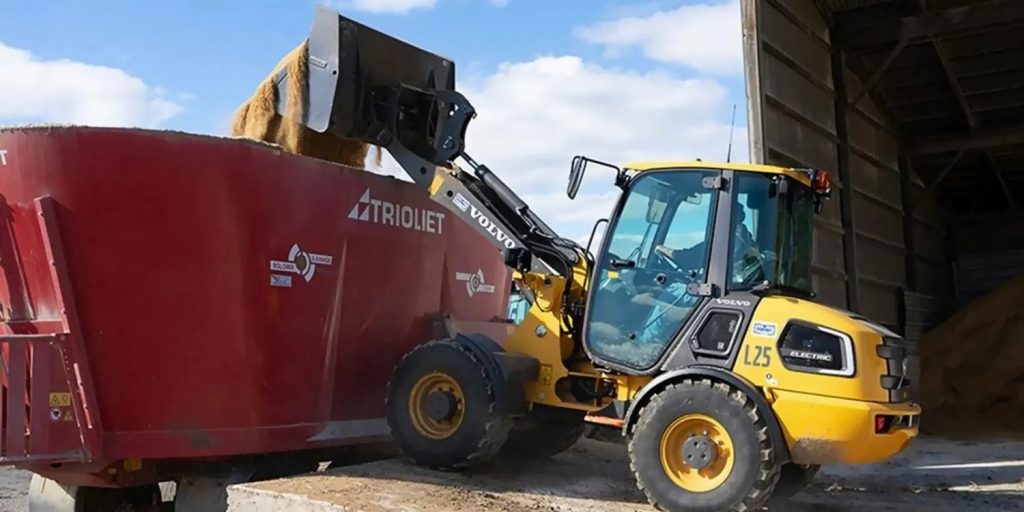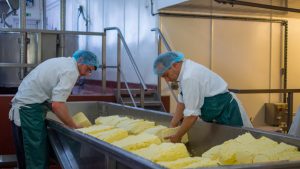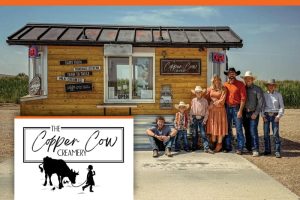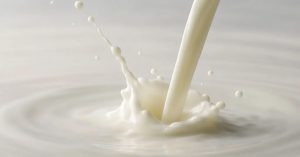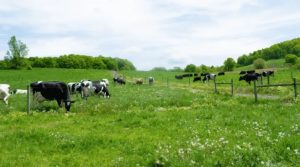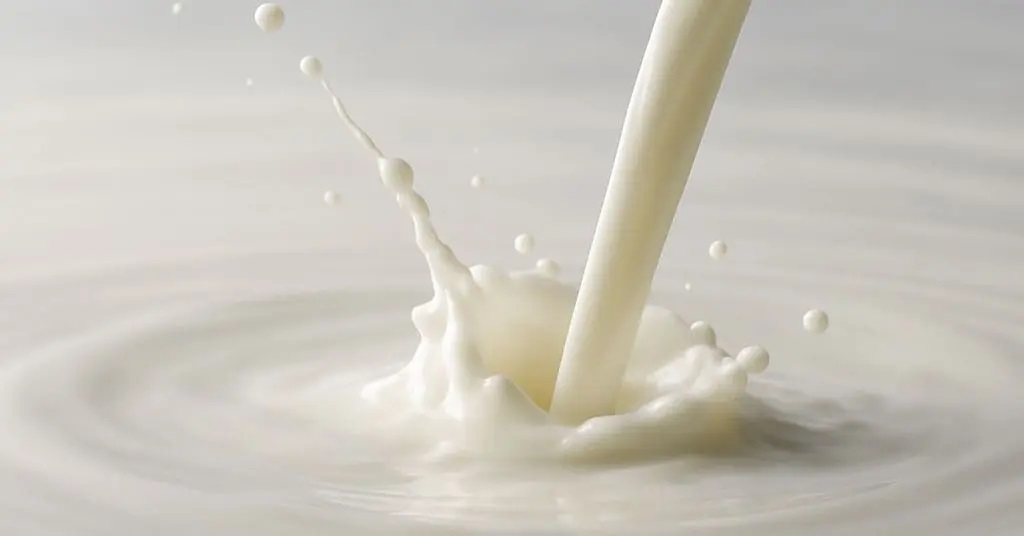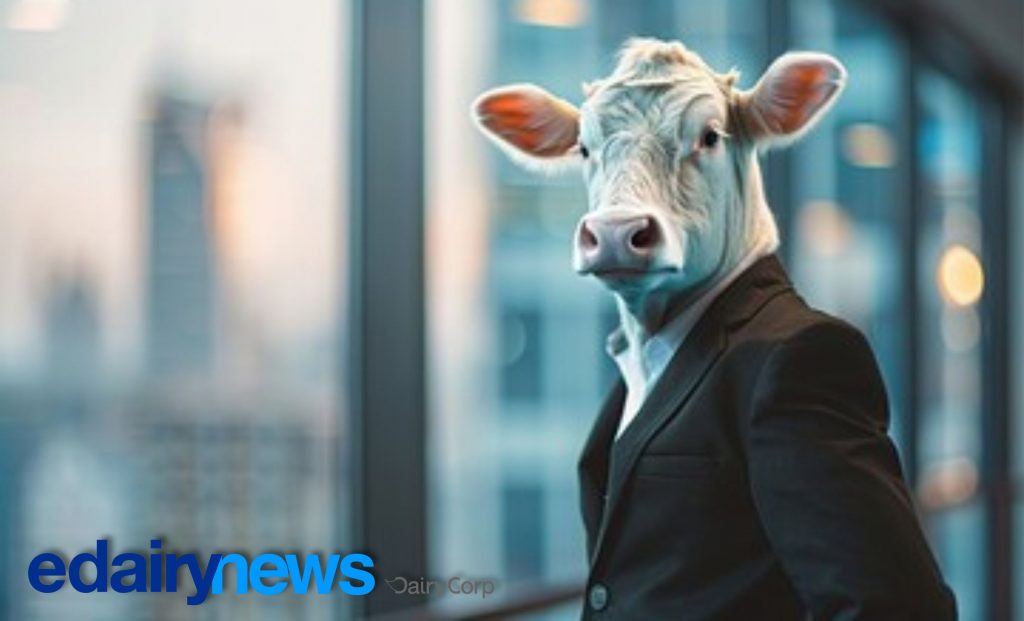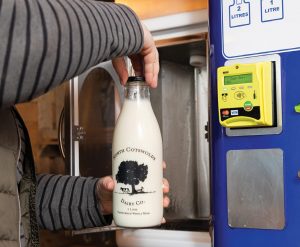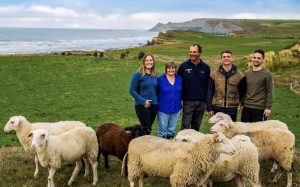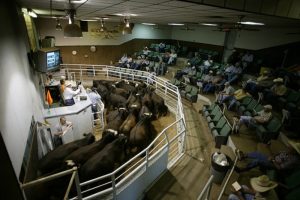
An 800-head dairy farm in central Pennsylvania is the first in the United States to create a truly circular energy cycle by using recovered biogas to generate the electricity needed to charge the electric wheel loader that pushes feed to its cattle.
Molly Pitcher Dairy in Shippensburg, Pennsylvania, uses a Volvo L120 electric wheel loader to feed its 800 head of dairy cattle each daily — and they’re showing other corporate farms that it’s possible to be more productive and more sustainable.
They’re accomplishing this first by deploying quiet, zero-emissions equipment assets that are better for both the health and safety of the farm’s employees and cattle, and second by powering those assets with electricity generated by methane-rich biogas that would otherwise be burned off or vented into the atmosphere.
The dairy uses a 1.5-million-gallon “anerobic digester” to recycles solid and liquid waste generated by the farm’s hundreds of cows (read: poop), producing energy-rich biogas that is used to generate electricity. Molly Pitcher Dairy actually generates enough electricity to power the farm, charge its wheel loader, and have enough left over to sell electrons back to their local grid.
As for the Volvo L120 Electric wheel loader itself, the machine offers a 6-ton lifting capacity and quiet, precise, vibration-free operation, making it a valuable asset on job sites from construction sites to ports and logistic centers, and on through to waste management and recycling.
Volvo’s L120 Electric delivers between 5-9 hours of continuous on a single charge, depending on the workload. While that’s enough for a typical shift, when the Volvo does need to power up, it can charge from 10-100% in one hour 40 minutes with a 180 kW DC fast charger, or overnight with the same standard L2 (220/240V) outlet that any proper farm already has a welder plugged into.
“This dairy runs 24/7, so the more electric that I can use, the better it is for us economically and for the environment. That is why I was interested in this new electric loader from Volvo,” says the farm’s owner, Keith Jones — but the most important customer feedback at Molly Pitcher Dairy came from the herd. Says Jones, “It took the cows a few passes with the loader to realize it was feeding time because they didn’t hear it driving down the barn aisles. It’s very quiet, and for the cows, that is very nice.”
Molly Pitcher Dairy is one of seven cattle farms across three states owned by the Jones brothers as part of a family business that also includes cattle harvesting and commercial trucking operations.
Electrek’s Take
We’ve written about the greenwashing of poop collecting before, but while experts on one end argue that the LCFS in particular awards credits to farmers at a much higher magnitude than the cost to operate and maintain a methane digester and experts on the other side argue that biomethane still creates burned emission the same way fossil fuels do, the fact remains that the carbon cost of burning biogas is net less than the conventional cost of burning fuel fossil fuels, if only because of the reduced carbon costs typically associated with their refining and transportation (the fact that the biowaste is generated regardless and otherwise wasted should also be considered, but needn’t be in order to realize an immediate “common sense” benefit here).
Don’t get me wrong, there are certainly better ways to power an EV — including wind and solar — but are there much better uses for hundreds of tons of cow poop? You guys are smart. Head down the comments and tell me what they are.
You can now read the most important #news on #eDairyNews #Whatsapp channels!!!
🇺🇸 eDairy News INGLÊS: https://whatsapp.com/channel/0029VaKsjzGDTkJyIN6hcP1K
